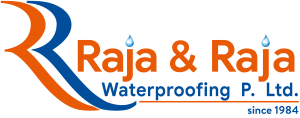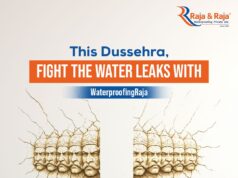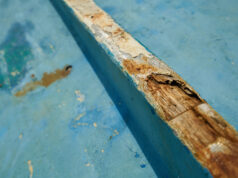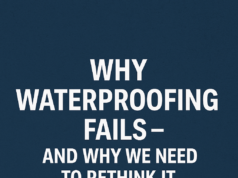Importance of Waterproofing for Building structures:
Water an element of the universe which is creator & destroyer to most of the things within this glove. The significant use of Water could create things beautifully else can destroy on another hand.
A good example to this is when an artist creates a sculpture made from plaster of Paris or unfired clay the water plays a significant role in getting the sculpture erected; higher content of the water can also erode the sculpture.
Same is the story with the building structures. The integrity & life of any structure is directly proportional to the water ingress in the form of moisture, rain or water vapours.
The Term Waterproofing is associated with many processes but by far been commonly known for the structures. The structures are designed by Architects, the feasibility of the same is been verified by Structural consultants and crafted by Engineers & contractors.
These activities are human-driven and have chances of a few flaws however the rectification of flaw on detection is the scope of contractor except then the flaw is encountered in the design or instruction implementation.
Managing timeline in construction is one of the tedious tasks as the coordination with multiple parties is involved in giving final shape to the structure. Equally the task of maintaining the moisture penetration is. Moisture penetration is also called as Seepage or dampness. The unnecessary moisture may effectively result in Leakage within the structure.
Before digging deeper, let’s understand what this Leakage / Seepage can do to the structure.
What Water leakage does to structures:
Water Leakage in any structure is a potential threat to the integrity & stability of the structure. The Water Leakage is termed as the presence of a Higher amount of moisture or water content resulting in dripping, dampening of the structure.
We all know the structure needs reinforcement while erecting. The types of materials used for erecting a structure includes:
- Bricks
- Wood
- Stone
- Metal Sheets
- Concrete
The above mentioned are erecting members, but they can’t erect the structure without an important structural member called Reinforcement.
The reinforcement for construction includes:
- Wood
- Steel
The reason wood & steel are used as reinforcement because of their exceptional capacity to undergo a limit of stress without bending or cracking failure. Both wood and steel acts as reinforcement and have a serious threat of the getting damaged because of constant contact with water.
Effect of Water on Wooden Reinforcement:
The wood when comes in the contact of water, the surface capillary of the wood sucks the water into the core of the log or timber. The core of the log is generally a fibrous material and soaks the water, resulting in the wooden member getting bulged until the first phase of contact with water or its forms.
If the water continues to be in contact with this wood, the wood starts catching up the mold and fungi due to bio-degradation of carbon, nitrogen present in the wooden member.
Finally, the wood gets rotted.
The rotted wood is a potential danger member of the structure as it has lost his inner strength to withstand the stress and bending movement. Eventually, it gets fractured and losses the strength to hold the structure.
Effect of Water on Steel Reinforcement:
Alike wood when structural steel comes in contact with Water or its form, the surface oxidation takes places due to the presence of air and water form and also the encapsulation of the steel gets damaged. This takes places because of the salt ion present in the water reacts with air and oxidation takes place. This could be mainly seen at the places coming in regular contact of Water, through diffusion & capillaries water reach up to the steel reinforcement. The steel starts to rust and can cause the following:
- White Patches formation
- Brown patches along with the reinforcement due to rusting
- Spalling of concrete
- Crack formation
- Snapping /Buckling of Steel bars
Constructing a structure is always a state-of-art and usually govern & undertaken in presence or supervision of Architects & Engineers associated. These designated persons undergo constant question towards the above read queries,
“What is the solution towards Moisture penetration to the Concrete or Structure?”
Answer is WATERPROOFING.
The idea of Waterproofing the structure is to protect the building structure against the ingress of water or its any form and stop the adverse effect of excessive water in the structure. The seepage or Leakage affects in many ways alike from Structural hazards (rusting to deterioration), health issues (like asthma because of inhaling moist air) etc.
The waterproofing is the best and must-have practice any contractor, architect & engineer needs to adopt and could be attained in the following manner:
- While conceptualization of the structural design
- Execution of Structural skeleton
- Post Construction
- Repair & Maintenance
With the implementation of the Waterproofing in above-mentioned stages, the nature of waterproofing is defined. Mentioned point 1 & 2 are the part of structural waterproofing and point 3 & 4 are surface waterproofing. Both have their pros in a way which is been discussed in this post.
A point to remember here and holds infinite gravity is “Waterproofing is a Preventive Measure and not curative measure; whereas Leakage & Seepage are Curative in nature.” And so the proverb “Prevention is better than Cure” implying best in case of Leakage and Seepage; as when Leakage/seepage begins it not only damages the aesthetic surface appearance but also damages the finished interior and furniture of the space. The absence of Waterproofing marks the Leakage & Seepage to have its presence and damage them. This damage includes the formation of Alge, Moss, Mold and home for insects like spider, worms & white ants (in case of Wooden interior), which creates potential damage to the investments.
From the above image, we hope the significant importance of the Waterproofing could be imagined & understood.
Today based on the importance of Waterproofing for a structure and constant research in the material chemistry to enhance the construction chemicals which has result in the advancements of Waterproofing materials & waterproofing technologies and overall construction industry. This advanced waterproofing technology not only increased the ease of application but also adds a lot of durability with least maintenance aspects.
Despite advanced construction chemical and best of class waterproofing products used, sometimes failure is experienced in the Waterproofing.
The failure is not because of the product or technology but about the education towards
- Source identification / Poor Investigation & Diagnostics
- Wrong Selection of Waterproofing Product
- Wrong application system of Products
- Design Flaws
- Poor Value Engineering
Also read: Why Waterproofing Fails?
Importance of the Waterproofing is also driven for:
- For Regulation: In earlier times, due to poor regulation governance, all premises seller weren’t offering a defect-free liability and as a result, people buying those premises has to undergo many troubleshooting activities like Waterproofing and so on.
Now in recent times, Due to strict compliances from Real Estate Regulatory Authority (RERA) falling in place as one of the important requirements for receiving final Occupational certificate (OC) with the provision of defect-free liability for Leakage and related issues from the developers & contractors is mandatory.
This resembles the higher importance of Waterproofing towards defect-free liability & longevity of the structure. - Towards Risk Prevention: Not only good but right waterproofing solution adds on value to the asset in risk prevention. If the right waterproofing is not provided, it can result in indirect damages to the asset and also risks the health value of individual residing there.
- In the prevention of Structural value & Avoid unnecessary cost: Would you like to invest in a waterproofing system by 3% of your actual asset valuation?
Yes, of course, this is the answer we received from most of the members we interacted till day. It is advisable & wise decision to invest in preventive risk measure than to let damage occur and pay for their rectification and losing peace of mind too. Every structure needs routine maintenance towards check of any damages caused due to structural movements, rain etc.




